Finding contemporary versions of limewashing
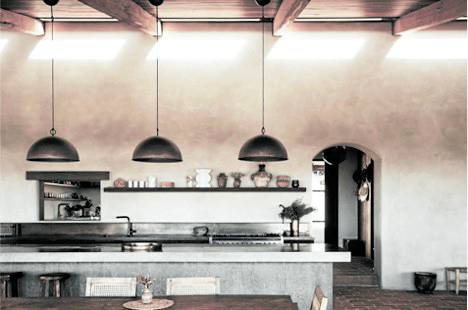
Limewash need not be too white. Variations of white can be achieved by adding pigments to limewash.—The Farm by The Design Files
Our January started with a scare—two of our household staff or “kasambahays” came down with COVID-19.
Our gardener-cum-handyman, and one of our house girls contracted it at the same time. Not surprising, since they are a couple and sharing a room meant that if one got it, the other easily could. And their little boy caught it, too. The positives on their antigen tests sent us into a flurry of cleaning and disinfecting, especially since one of them cleans all our bedrooms, and she did so in the morning of the day she fell ill.
It surprised us that no one else at home contracted it. Whether any of our assumptions are correct, we’ve always thought that the way our home is designed has helped keep COVID-19 away.
For starters, we have large operable windows, high and wide roof eaves, and rooms with proper cross ventilation. All areas are practically whitewashed with white painted walls and light wood flooring. I seriously must wear sunblock at home on sunny days because our spaces burst with so much sunlight.
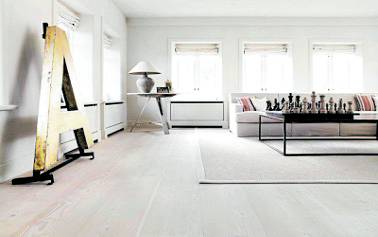
Wooden floors can be whitewashed by bleaching and by the application of a thin, translucent film of flat paint prior to sealing.—decoratorist
But the real “whitewash”—a term used for rooms that were literally awash in white—started out as “limewash” which is a basic paint made from a combination of lime from crushed natural limestone and water.
Its history traces as far back into the Egyptian times when it was used as a paint and a waterproofing agent. It was more commonly recognized as a disinfecting surface coat during the age of agriculture, where it was used in rural homes and barns to control diseases borne out of, or carried by, domesticated animals. During past pandemics, limewash was used in communities to control the spread of disease. Areas that had high infection rates were promptly “whitewashed” to keep cases at bay.
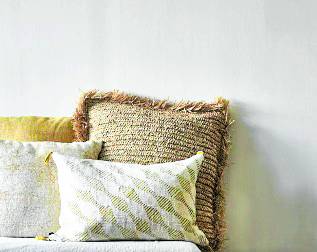
Limewash can be applied on a flat surface for a smoother texture, here, beautifully contrasting against heavy weaves and fabrics.—Martha Stewart
Lime and water are mixed to reach a consistency of milk which would be in proportion approximately 80 percent of water to 20 percent of lime. Limewash has no volatile organic compounds nor harmful chemicals and is non-toxic to people and pets. Moreover, it is known to be anti-fungal and anti-bacterial because of its high PH level of 12 to 13, a level of alkalinity so high that microorganisms are unable to thrive on its surfaces.
More recently, the whitewashed look has been popular, as its brightness and lightness work like an antidote to the current gloom of uncertainty. Brightness also exposes dirt, hence, whiter and brighter usually translate to cleaner. Fortunately, there are many easy ways you can whitewash your spaces.
For one, limewash is accessible through online stores. They are sold by bag in powder form which can be mixed with water and applied as you would paint.
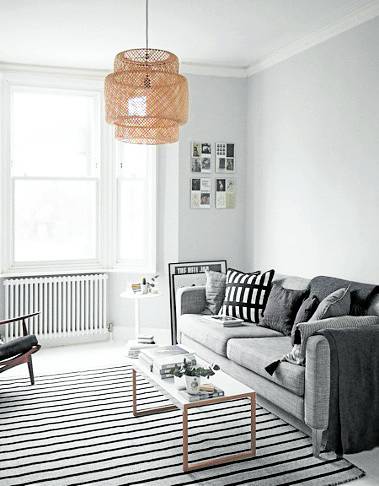
A small living room whitewashed in an off-white with grey overtones, maintaining its color scheme made up of a full spectrum monochrome palette ranging from whites to dark greys —catehill.com
The beauty of this home-mixed system is that you can achieve translucency and textures depending on the dilution of the powder to water. You can even add pigments to create off-white tones, leaning towards a preferred color hue to work with your color scheme. Limewashes though tend to have a light natural warm and creamy cast and are in a very matte surface finish.
Another way is to just paint your rooms white with regular latex house paint. This isn’t limewash but having UV light bouncing off your walls in our tropical climate could simulate the sanitizing effects of lime. Most local paint companies offer a variety of off-whites to choose from, allowing you to achieve a certain level of coolness or warmth. You can also choose a more textural white paint like decorative stuccos that come in a variety of troweled textures.If your walls are already white and you’d like more brightness in your spaces, you can explore the process of bleaching your timber floors or ceilings and whitewashing them with a thin film of latex paint before you apply a final clear coat on them.
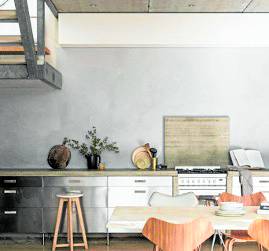
Limewash has anti-microbial and anti-fungal properties. Despite its matte and sometimes rough texture, its high alkaline content discourages the growth of microorganisms.
If that’s too much work, look for a light-colored area rug, or a light golden abaca rug, or source the Japanese PVC mats that you can get in light beige colors. You can also change your colored curtains to white ones and use textural material that can complement your flat white walls and even add character to your space.
There are many ways to bring that feeling of clean and bright into your spaces, and thankfully, technology has brought us forward into a world with the many shades and textures of whitewashes.
